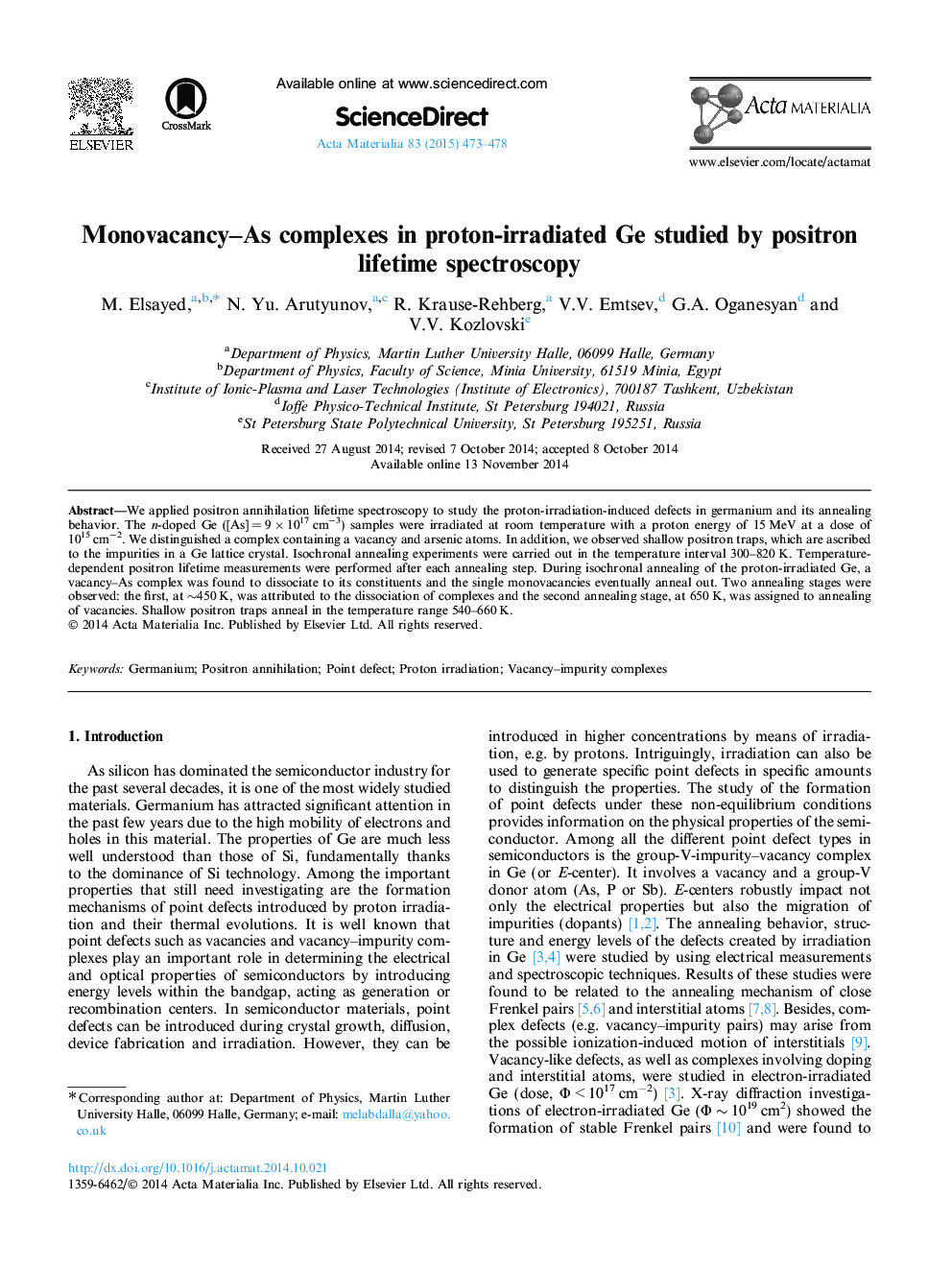| Article ID | Journal | Published Year | Pages | File Type |
|---|---|---|---|---|
| 7880953 | Acta Materialia | 2015 | 6 Pages |
Abstract
We applied positron annihilation lifetime spectroscopy to study the proton-irradiation-induced defects in germanium and its annealing behavior. The n-doped Ge ([As]Â =Â 9Â ÃÂ 1017Â cmâ3) samples were irradiated at room temperature with a proton energy of 15Â MeV at a dose of 1015Â cmâ2. We distinguished a complex containing a vacancy and arsenic atoms. In addition, we observed shallow positron traps, which are ascribed to the impurities in a Ge lattice crystal. Isochronal annealing experiments were carried out in the temperature interval 300-820Â K. Temperature-dependent positron lifetime measurements were performed after each annealing step. During isochronal annealing of the proton-irradiated Ge, a vacancy-As complex was found to dissociate to its constituents and the single monovacancies eventually anneal out. Two annealing stages were observed: the first, at â¼450Â K, was attributed to the dissociation of complexes and the second annealing stage, at 650Â K, was assigned to annealing of vacancies. Shallow positron traps anneal in the temperature range 540-660Â K.
Related Topics
Physical Sciences and Engineering
Materials Science
Ceramics and Composites
Authors
M. Elsayed, N. Yu. Arutyunov, R. Krause-Rehberg, V.V. Emtsev, G.A. Oganesyan, V.V. Kozlovski,
